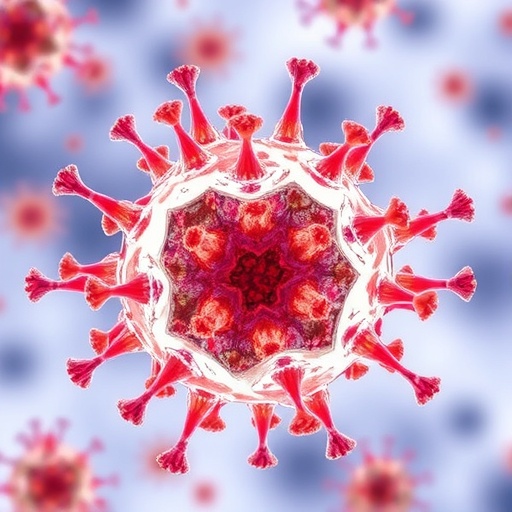Cells in nearly any part of the body can become cancerous and transform into tumors. Some, like skin cancer, are relatively accessible to treatment via surgery or radiation, which minimizes damage to healthy cells; others, like pancreatic cancer, are deep in the body and can only be reached by flooding the bloodstream with cell-killing chemotherapies that, ideally, shrink tumors by accumulating in their ill-formed blood and lymph vessels in higher amounts than in vessels of healthy tissues. To improve the low efficacy and toxic side effects of chemotherapies that rely on this passive accumulation, a team of researchers at the Wyss Institute at Harvard University, Boston Children's Hospital, and Harvard Medical School has developed a new drug delivery platform that uses safe, low-energy ultrasound waves to trigger the dispersal of chemotherapy-containing sustained-release nanoparticles precisely at tumor sites, resulting in a two-fold increase in targeting efficacy and a dramatic reduction in both tumor size and drug-related toxicity in mouse models of breast cancer.
"We essentially have an external activation method that can localize drug delivery anywhere you want it, which is much more effective than just injecting a bunch of nanoparticles," says co-first author Netanel Korin, Ph.D., former Wyss Technology Development Fellow and current Assistant Professor at the Israel Institute of Technology.
The key to this new method is the creation of nanoparticle aggregates (NPAs), which are tiny structures consisting of drug-containing nanoparticles surrounded by a supportive matrix, akin to the berries suspended in a blueberry muffin. Like chefs trying to craft the perfect pastry, the researchers experimented with a variety of nanoparticle sizes and nanoparticle-to-matrix ratios to create NPAs that are stable enough to remain intact when injected, but also finely tuned to break apart when disrupted with low-energy ultrasound waves, freeing the nanoparticles that then release their drug payloads over time, like blueberries slowly leaking their juice.
To test whether the NPAs worked as designed, the team first exposed mouse breast cancer cells to either loose nanoparticles, intact NPAs, or NPAs that had been treated with ultrasound. The ultrasound-treated NPAs and loose nanoparticles both showed greater tumor internalization than the intact NPAs, showing that the ultrasound waves effectively broke up the NPAs to allow the nanoparticles to infiltrate cancer cells.
Next, the researchers repeated the experiments with nanoparticles containing doxorubicin (a common chemotherapy drug used to treat a variety of cancers) and found that the NPAs resulted in a comparable level of cancer cell death, demonstrating that NPA encapsulation did not negatively impact the efficacy of the drug.
Finally, to see whether the NPAs performed well compared with loose nanoparticles in vivo, both formulations were injected intravenously into mice with breast cancer tumors. Ultrasound-treated NPAs delivered nearly five times the amount of nanoparticles to the tumor site as intact NPAs, while loose nanoparticles delivered two to three times that amount. When the nanoparticles were loaded with doxorubicin, tumors in mice that received NPAs and ultrasound shrank by nearly half compared with those in mice that received loose nanoparticles. Crucially, by using NPAs, the researchers were able to cut tumor size in half using one-tenth of the dose of doxorubicin usually required, reducing the number of mouse deaths due to drug toxicity from 40% to 0%.
"Locking nanoparticles up in NPAs permits precise delivery of an army of nanoparticles from each single NPA directly to the tumor in response to ultrasound, and this greatly minimizes the dilution of these nanoparticles in the bloodstream," says Anne-Laure Papa, Ph.D., co-first author and postdoctoral fellow at the Wyss Institute. "Additionally, our ultrasound-triggered NPAs displayed distribution patterns throughout the body similar to the FDA-approved PLGA polymer nanoparticles, so we expect the NPAs to be comparably safe."
NPAs were also observed to limit the "burst release" commonly observed in nanoparticle drug delivery, in which a significant number of them break open and release their drug soon after injection, causing an adverse response around the site of injection and reducing the amount of the drug that gets to the tumor. When applied to cancer cells in vitro, loose nanoparticles released 25% of their drug payload within five minutes of being administered, while the nanoparticles contained within intact NPAs released just 1.8% of their drug. When ultrasound was applied, an additional 65% of the drug was released from the NPAs compared with loose nanoparticles, which only released an additional 11%.
The team says additional research could further improve the performance of ultrasound-sensitive NPAs, making the platform an attractive option for safer, more effective chemotherapy delivery. It could be made even more powerful through combination with other tumor-targeting strategies such as using peptides that home to the tumor microenvironment to further guide cancer drugs to their targets. "We hope that in the future our triggered accumulation technique can be combined with such targeting strategies to produce even more potent treatment effects," says Papa.
"This approach offers a novel solution to the pervasive problem of delivering a high concentration of an intravenous drug to a very specific area while sparing the rest of the body," says senior author and Wyss Founding Director Donald Ingber, M.D., Ph.D., who is also the Judah Folkman Professor of Vascular Biology at Harvard Medical School (HMS) and the Vascular Biology Program at Boston Children's Hospital, and Professor of Bioengineering at Harvard SEAS. "By using localized ultrasound to selectively deploy sustained-release nanoparticles loaded with high drug concentrations, we have created a non-invasive way to safely and effectively deliver chemotherapy only where and when it's needed."
###
Mathumai Kanapathipillai, Ph.D., who also co-first authored the paper as a Research Scientist at the Wyss Institute, is currently an Assistant Professor of Mechanical Engineering at University of Michigan-Dearborn. Other contributing authors include Robert Mannix, Ph.D., Oktay Uzun, Ph.D., Christopher Johnson, Deen Bhatta, and Garry Cuneo from the Wyss Institute; and Akiko Mammoto, M.D., Ph.D., Tadanori Mammoto, M.D., Ph.D., and Amanda Jiang from the Vascular Biology Program and Department of Surgery at Boston Children's Hospital and HMS.
This research was supported by the US Army Medical Research and Materiel Command under DoD Breast Cancer Innovator Award No. W81XWH-08-1-0659, DoD grant No. W81WXH-10-1-0565, and DoD Breast Cancer Breakthrough Award No. W81XWH-15-1-0305. Opinions, interpretations, conclusions and recommendations are those of the authors and are not necessarily endorsed by the U.S. Army.
MULTIMEDIA AVAILABLE
PRESS CONTACT
Wyss Institute for Biologically Inspired Engineering at Harvard University
Lindsay Brownell, [email protected], +1 617-432-8266
MULTIMEDIA CONTACT
Wyss Institute for Biologically Inspired Engineering at Harvard University Seth Kroll, [email protected], +1 617-432-7758
The Wyss Institute for Biologically Inspired Engineering at Harvard University (http://wyss.harvard.edu) uses Nature's design principles to develop bioinspired materials and devices that will transform medicine and create a more sustainable world. Wyss researchers are developing innovative new engineering solutions for healthcare, energy, architecture, robotics, and manufacturing that are translated into commercial products and therapies through collaborations with clinical investigators, corporate alliances, and formation of new startups. The Wyss Institute creates transformative technological breakthroughs by engaging in high risk research, and crosses disciplinary and institutional barriers, working as an alliance that includes Harvard's Schools of Medicine, Engineering, Arts & Sciences and Design, and in partnership with Beth Israel Deaconess Medical Center, Brigham and Women's Hospital, Boston Children's Hospital, Dana-Farber Cancer Institute, Massachusetts General Hospital, the University of Massachusetts Medical School, Spaulding Rehabilitation Hospital, Boston University, Tufts University, Charité – Universitätsmedizin Berlin, University of Zurich and Massachusetts Institute of Technology.
Media Contact
Lindsay Brownell
[email protected]
617-432-8266
@wyssinstitute
https://wyss.harvard.edu/a-mechanical-trigger-for-toxic-tumor-therapy
Related Journal Article
http://dx.doi.org/10.1016/j.biomaterials.2017.06.003
############
Story Source: Materials provided by Scienmag




